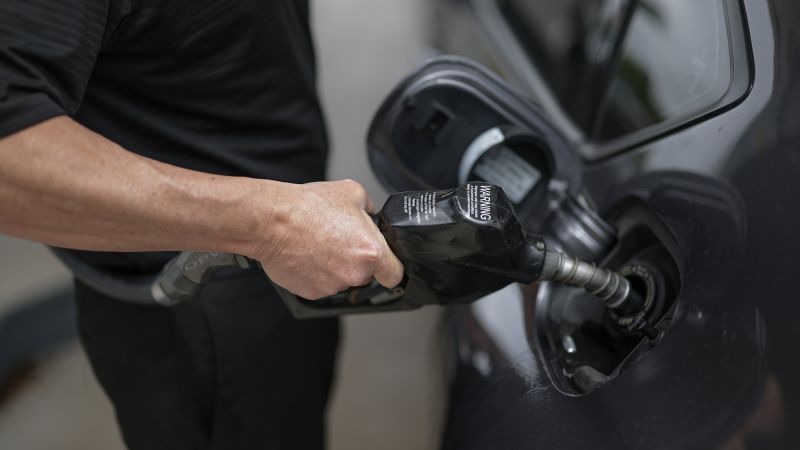As Memorial Day weekend approaches, almost 40 million Americans are gearing up for a journey, and they have a silver lining to accompany them amidst the potential traffic: significantly reduced gas prices. According to the latest projections from GasBuddy, a fuel savings platform, the national average price for a gallon of unleaded gasoline is expected to hover around $3.08 this upcoming holiday. This forecast positions Memorial Day 2023 as witnessing the lowest gas prices at this time of year since 2021. Comparatively, last year’s average was $3.58 per gallon, while in 2022, the price had soared to an alarming $4.60.
The decline in gas prices serves as an illuminating aspect amidst ongoing discussions about economic stability in the United States, which is concurrently facing challenges such as trade conflicts and overall concerns about economic growth. As Patrick DeHaan, the head of petroleum analysis at GasBuddy, remarked in a phone interview with CNN, “This is a win for consumers.” He also hinted that, should favorable conditions align, the national average could dip below the $3 mark later this summer. This potential drop would be particularly noteworthy when adjusted for inflation, as the projected gas price sees levels not witnessed since 2003, excluding the peak fluctuations caused by the COVID-19 pandemic.
The insights presented by DeHaan reveal that consumers will find relief at the pump, indicating that Americans will have to work less to refill their fuel tanks, which, given the economic circumstances of the past few years, is a welcomed respite. However, the subdued prices do not exist in a vacuum; they are also linked to broader global economic conditions, including worries surrounding the Trump administration’s tariffs, which many fear could adversely affect both the U.S. and global economies.
A surge in travel is expected this Memorial Day weekend, with AAA forecasting approximately 39.4 million individuals driving to their destinations — a 3% increase from the previous year and nearly 4.6% more than in 2019. Hence, the relatively low gas prices may not only improve consumer sentiment but also represent a tangible reduction in the cost of living, a critical issue for voters highlighted in the last election cycle. Bob McNally, president of the consulting firm Rapidan Energy Group, articulated this sentiment perfectly when he described lower gas prices as akin to a “psychological tax cut,” highlighting that even those who are not filling their tanks will likely notice the lower prices while on the road.
The benefits of decreased gas prices have already been reflected in favorable inflation reports during March and April, a trend that GasBuddy anticipates will carry forward through the summer, projecting an average of $3.02 per gallon during this entire span, from Memorial Day right up to Labor Day. This resurgence of affordable fuel prices comes on the heels of a tumultuous period, during which gas prices skyrocketed due to geopolitical disturbances like Russia’s invasion of Ukraine.
The Biden administration has attempted to address these elevated fuel costs, emphasizing the necessity of increasing domestic production, reducing regulatory constraints, and pressuring OPEC members to amplify oil supply. Since the start of Trump’s term, U.S. oil prices have plummeted about 20%, influenced partly by increased production from Saudi Arabia and OPEC — moves that were encouraged by Trump during his first significant addresses.
However, these lower prices for crude oil have not entirely transitioned into lower gasoline prices for consumers. The disconnect can be attributed to subsequent refinery shutdowns across the nation, a response to anticipated declines in gasoline demand attributed to the global shift towards electric vehicles. The energy narrative remains complex; while crude prices have taken a downward trajectory, gasoline prices remain persistently high relative to oil.
In conclusion, as Memorial Day draws nearer, the combination of increased travel and lowered fuel prices paints a picture of consumer optimism. Yet, the economic landscape remains nuanced and layered with challenges, driven by trade policies and evolving energy dynamics. In light of these developments, the price of gasoline continues to play a crucial role in shaping consumer sentiment and perceptions about the larger economy as Americans enjoy the unofficial beginning of summer.



